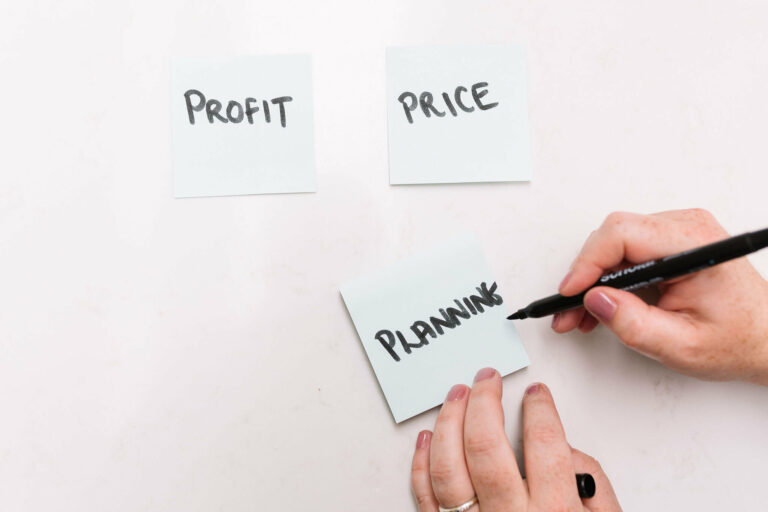What is a Good Profit Margin for an eCommerce Business?
Businesses live and die at the margins – the profit margins, that is. When pricing up their products, small business owners sometimes neglect this number. But it’s a major concern in big businesses – whole teams of people obsess over this number. (I should know; I used to be one of them!)
It’s time you obsessed about it, too.
Your profit margin is the fundamental barometer of your company’s financial health and industry competitiveness. If you fail to get it right, every sale, far from being a success, is actually a dagger in your company. Low or even negative profit margins can cause companies to haemorrhage money.
So, what is a good profit margin? How do you calculate this key metric? And what’s the big deal anyway? Find out below.
In this guide:
- What is a Profit Margin?
- How to Work Out Profit Margin?
- Gross Profit Margin vs. Net Profit Margin: What’s the Difference?
- What is a Good Profit Margin?
What is a Profit Margin?

Profit margins represent the percentage of revenue that remains as profit after deducting all expenses, including the cost of goods sold (COGS), operating costs, and taxes.
The greater your profit margin, the more money you make for every item sold. However, if your profit margin runs into the negative, you actually make a loss per sale. That’s a major red flag for your business!
At the very least, your overall gross profit margin should cover product costs, a.k.a. break even. But, if you can boost your profit margin, it can radically improve your company’s financial performance.
How to Work Out Profit Margin?

To calculate the Profit Margin, follow this straightforward formula:
- Determine your Net Profit: Start by subtracting all expenses, including COGS, operating expenses, taxes, and interest, from your total revenue. This yields your net profit.
- Calculate the Profit Margin Percentage: Divide the net profit by the total revenue and then multiply by 100 to express it as a percentage.
Let’s put that into a formula:
Profit Margin % = Net ProfitTotal Revenue × 100
In this equation:
- Profit Margin (%) represents the percentage of profit earned from total revenue.
- Net Profit is the total revenue minus all expenses.
- Total Revenue is the overall income generated by your business.
For example, if your business generated £100,000 in revenue and had £70,000 in expenses, your net profit is £30,000. To find the profit margin, divide £30,000 by £100,000 and multiply by 100, resulting in a 30% profit margin. This indicates that 30% of your revenue translates into profit after covering all expenses.
However, you can also determine the profit margin per product. Follow the equation above but plug in the product price instead of the total revenue and the net profit (i.e., the product price minus the product costs). The number at the end, your profit margin, is sometimes called the “in-margin.”
Remember, account for everything – too often, I see businesses fail to factor in important costs, e.g., the postage on materials or time taken to create an item.
Gross Profit Margin vs. Net Profit Margin: What’s the Difference?
When you want to figure out how well a company is doing financially, you often look at two critical measures: the Gross Profit Margin and the Net Profit Margin.
These metrics give you valuable information about a business’s profitability. Let’s break down the distinctions between these two metrics in simpler terms.
Gross Profit Margin
The Gross Profit Margin tells you the percentage of revenue that remains after subtracting the cost of goods sold (COGS). COGS includes all the direct expenses related to making or buying a company’s products or services. This could involve things like raw materials, labour, manufacturing, or wholesale purchases. To calculate the Gross Profit Margin, use this formula:
Gross Profit Margin % = Gross ProfitTotal Revenue × 100
This margin shows how well a company manages the costs directly tied to its production and sales. A higher Gross Profit Margin means the company is good at controlling these expenses and keeps a bigger chunk of its revenue as profit before dealing with other costs.
Operating Profit Margin
Before we dive into Net Profit Margin, let’s briefly touch on the Operating Profit Margin. This metric considers a company’s profitability after looking at not just the COGS but also other operational expenses like marketing, employee salaries, rent, and utilities.
Before you can calculate your Operating Profit Margin, you need to know your operating profit:
Operating income = Gross Profit – Operating Expenses
To calculate the Operating Profit Margin, use this formula:
Operating Profit Margin % = Operating ProfitTotal Revenue × 100
The Operating Profit Margin gives you a sense of how efficiently a company manages both production and operational costs, giving you insight into its core operational profitability.
Net Profit Margin
The Net Profit Margin, often called just Profit Margin, considers all expenses, including COGS, operating costs, interest, taxes, and any other expenses. After deducting all these costs, it tells you the percentage of revenue left as a profit. To calculate the Net Profit Margin, use this formula:
Net Profit Margin % = Net ProfitTotal Revenue × 100
This margin offers the most complete view of a company’s overall profitability because it takes into account everything—production and operational expenses, financial obligations, and taxes.
What is a Good Profit Margin?

Some industries have it easier than others. Unfortunately, if you’re in the eCommerce industry, you fall into the harder category. With fierce competition and razor-thin margins, maximising your profit margin is critical for sustainable business growth.
As a rule of thumb, aim for a profit margin of at least 50% when selling directly to customers. If you plan to sell wholesale to other retailers, target a margin of 70% or higher. While your wholesale margin may not reach 70%, having a retail margin exceeding this threshold ensures your wholesale activities will be financially viable.
Here are some factors to include in your costs:
For manufactured goods:
- Product cost
- Shipping and import expenses
- Packaging expenses (like tissue paper, stickers, and boxes)
- Postage cost (unless covered by the customer)
- Fulfilment expenses (packing and dispatch)
- Labour cost if you’re handling it
For handmade goods:
- Material cost
- Shipping and import fees for materials
- Packaging costs (tissue paper, stickers, boxes, etc.)
- Postage fees (unless the customer pays)
- Fulfilment expenses (packing and dispatch)
- Your labour time to create the product
Consider including selling fees (e.g., PayPal commission) in your margin calculation. It’s especially helpful when these fees vary across multiple platforms.
Closing Thoughts

Don’t neglect your profit margins. Run your calculation routinely to ensure you keep above the waterline.
Want more expert advice and personalised guidance? Join the Resilient Retail Club today and supercharge your small business for success! Get access to valuable resources, expert insights, and a supportive community. Don’t miss out; sign up now!








